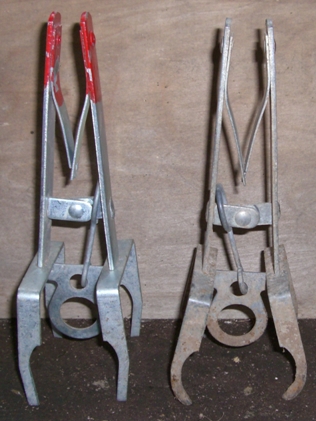|
My first choice.
This type of trap appears to
have several names. Eliza Tinsley Trap, No. 1402 Trap, English
Scissor Trap, Scissor Type Mole Trap.
The shape of the legs must be
altered, as shown. The shape of the handles and the way
the wire holds the setting ring makes it so easy to set for mole
catching.
Always find out before you buy that the
handles are welded to the legs. There are traps looking exactly like the
trap on the left where the handles are not welded but crimped. With
traps that have been welded, you can bend the legs outward to make a
wider opening, but if the trap has been crimped then the joint between
the handles and legs become loose.
|
My second choice.
Procter PEST-STOP Scissor Mole Trap.
This is an ideal trap to buy because
no
alterations are needed. Perfect for catching
moles if
the
coiled spring is kept oiled.
|
| |
|
In my opinion, there are more advantages for
setting these types of traps with long handles that I have chosen than any other trap.
(1) It is very easy when holding the
handles for the setting and unsetting of the trap.
(2) You only need a trowel to make a
hole to set a trap, resulting in less ground disturbance, compared with
some traps that need a spade.
(3)
You can see if the trap has been triggered without being close to the trap.
(4) You can test to see if the mole has
filled the trap with soil without the mole setting the trap off, or you
uncovering the set trap.
(5) It is very quick and easy
to pull the trap out of the mole run and remove a caught mole, compared
with many other types of traps.
|
|
--------------------------------------------------------------- |
| These two traps below, are similar
in shape to the left-hand trap above but all are constructed
differently. My first choice trap, above left, is the best design of the
three. |
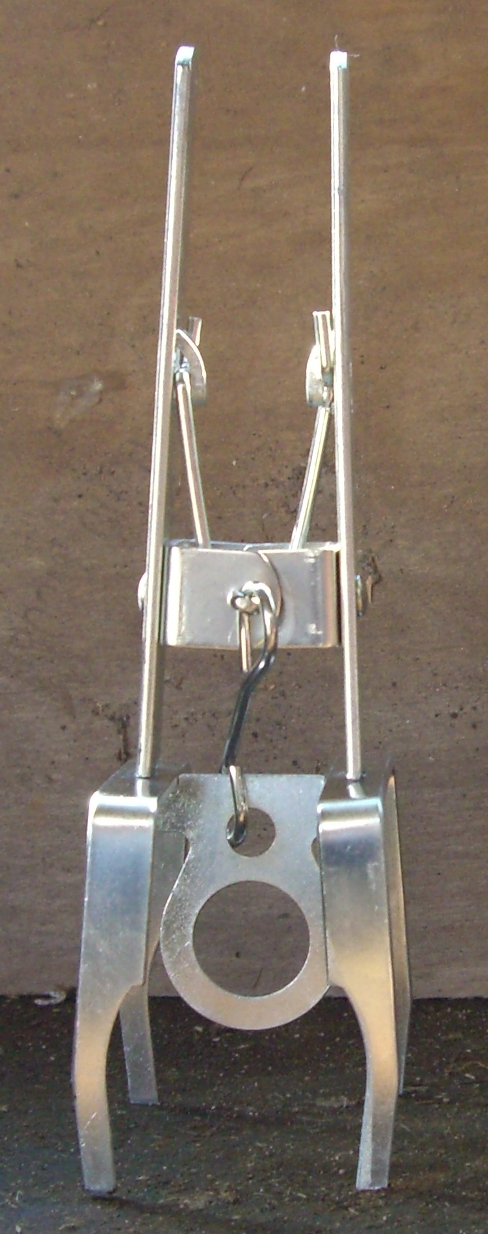 |
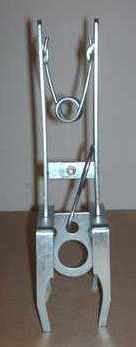 |
|
"Defenders or STV312 Mole Claw Trap" is the worst designed
mole trap of the three similar traps. The main problems along with other
problems is the way the
setting ring is attached to the trap and the legs are not welded to the
handles.
|
|
| ---------------------------------------------------------------. |
|
|
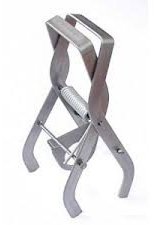 |
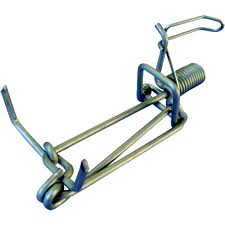 |
|
I have seen that this trap is called a "Fen Mole Trap"
and also "Yorkshire Pattern Scissor Trap". I found the legs did not
open wide enough after a time from wear on the trigger plate and there is no way that they
can be widened on this design of trap.
|
"Trapline". After digging a hole to find the
mole run, then two traps are needed
to push up into the ends of the mole run. The traps then have to be
covered up, to keep out the light. To check the traps, they then have to
be uncovered to see if a mole has been caught. Not very practical.
|
| --------------------------------------------------------------- |
| |
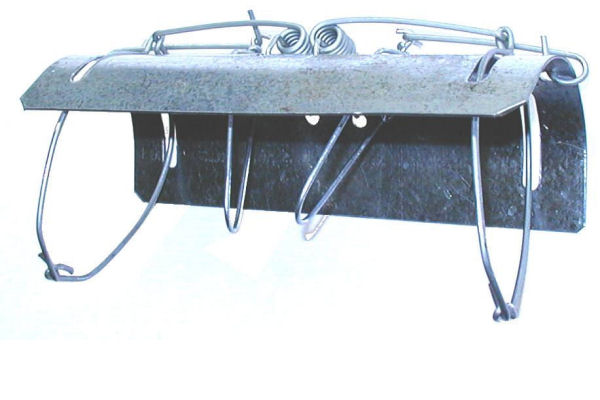 |
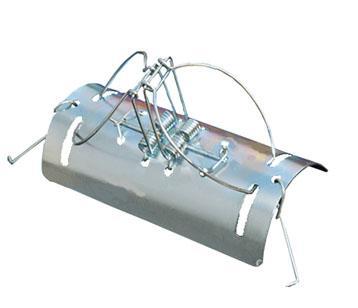 |
|
Tunnel traps. The only advantage
using this type of trap is that they can be set in places with public
access because they are hidden underground and providing you know where
you put them without a marker! Catching two moles at once
is rare and no advantage because all the time you are setting
the equivalent of two traps in a large hole and hopefully catching a mole.
|
|
--------------------------------------------------------------- |
| |
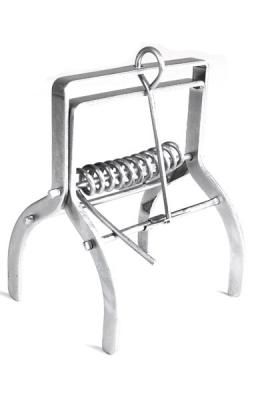 |
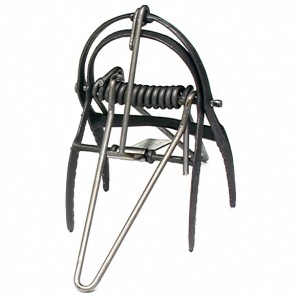 |
| Talpex type traps. There are many
different shapes. |
|
A lot of people are buying this type of trap, instead of having moles
filling other types of traps up with soil because they do not know how
to set them. With these type of traps, you have to put soil in the mole run under the trap for the mole to
push through the soil and trigger the trap. It has to have a very strong
spring which can be dangerous if not handled right. These traps are more difficult to set
than my choice of traps but a 100% catching rate can be achieved. Please
read the email, with pictures, showing how this was done. Go to "Emails
received" on the Menu.
|
|
--------------------------------------------------------------- |
| |
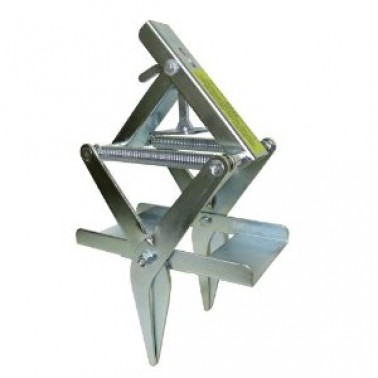 |
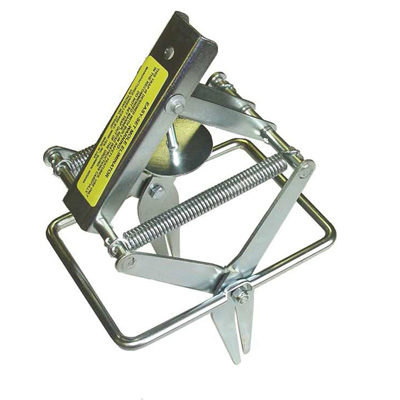 |
|
They are called "Easy Set Traps". This
looks to me that a lever is pushed down and the trap is set. It then has
to be set into a mole run.
|
|
--------------------------------------------------------------- |
| |
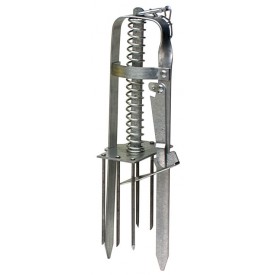 |
|
|
This trap is pushed into the ground with the
thicker legs and the
thin centre spikes are set at a higher level over a raised shallow mole run,
that has been flattened. When the mole returns pushing up a raised mole
run, then the trap is triggered, releasing the spring and forces the spikes
to penetrate the mole run. This trap can also be set below ground level.
|
|
| |
| News Extra |
| |
| Why not advertise locally,
"Wanted, old mole traps. Any condition considered" |
|
There must be tens of thousands of mole traps lying in
sheds and not being used and it is surprising what a bit of rust
removing and oiling will do. An old rusty trap could be far better than
buying a new trap. I have removed the setting ring from new traps and
put them on old traps.
|
|
I have been given old traps and I know other
people have been given old traps which are not wanted any more with the
curved legs which are far better than the modern traps if you are unable
to reshape the legs.
|
| --------------------------------------------------------------- |
| Webpage designed and produced by |
| John Finnemore, Walcote Farm,
Warwickshire. |
|
www.walcotefarm.co.uk |
| |
| |
